
Palermo is a city in southern Italy, the capital of both the autonomous region of Sicily and the Metropolitan City of Palermo, the city's surrounding metropolitan province. The city is noted for its history, culture, architecture and gastronomy, playing an important role throughout much of its existence; it is over 2,700 years old. Palermo is in the northwest of the island of Sicily, by the Gulf of Palermo in the Tyrrhenian Sea.
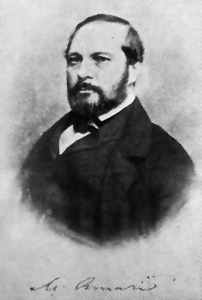
Michele Benedetto Gaetano Amari was a Sicilian patriot, liberal revolutionary and politician of aristocratic background, historian and orientalist. He rose to prominence as a champion of Sicilian independence from the Neapolitan Bourbon rule when he published his history of the War of the Sicilian Vespers in 1842. He was a minister in the Sicilian revolutionary government of 1848–9 and in Garibaldi's revolutionary cabinet in Sicily in 1860. Having embraced the cause of Italian unification, he helped prepare the annexation of Sicily by the Kingdom of Sardinia and was active in his later years as a senator of the Kingdom of Italy.
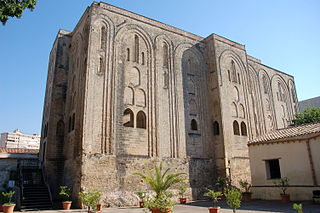
The Cuba is a recreational palace in the Sicilian city of Palermo, originally part of the Sollazzi Regi group of Norman palaces. It was built in 1180 by William II of Sicily in his Royal Park, together with an artificial lake. The name Cuba derives either from its cubical form, or the Arabic Qubba, "dome". It is an imitation of the Zisa palace. In July 2015 it was included in the UNESCO Arab-Norman Palermo and the Cathedral Churches of Cefalù and Monreale World Heritage Site.

Kalsa or Mandamento Tribunali is a historical quarter of the Italian city of Palermo in Sicily. It is sometimes referred to as la Kalsa or the Kalsa.
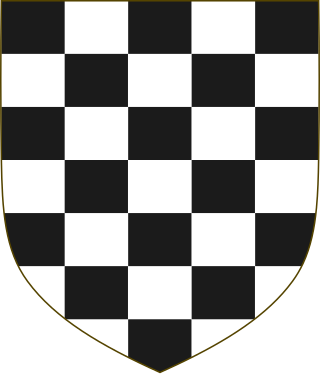
The Pepoli family was an Italian aristocratic banking family of Bologna, in northern Italy. They were lords of the city for thirteen years in the fourteenth century. A branch of the family moved to Trapani in Sicily and were granted several feudal lordships and baronies.
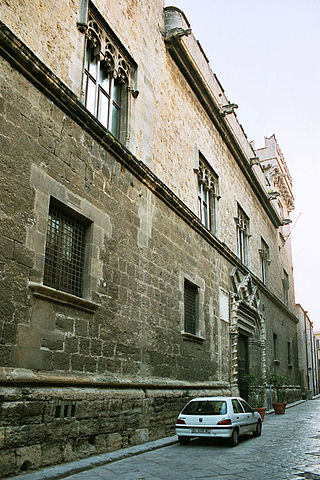
Palazzo Abatellis is a palazzo in Palermo, Sicily, southern Italy, located in the Kalsa quarter. It is home to the Galleria Regionale della Sicilia, the Gallery of Art for the Sicilian region.

The Apotheosis of Palermo is a fresco by Vito D'Anna in the Palazzo Isnello, Palermo, Italy, considered one of the most representative works of the Sicilian Baroque painting.

Vito D'Anna was an Italian painter, considered the most prominent painter of Palermitan rococo and one of the most important artists of Sicily.
Francesco Sozzi was an Italian painter, active in style characteristic of the Rococo period in Palermo. He is distinguished from other fellow painters for his graceful, delicate, and elegant style.

The Four Seasons is a cycle of four frescoes by Francesco Sozzi in the Palazzo Isnello, Palermo, Italy.
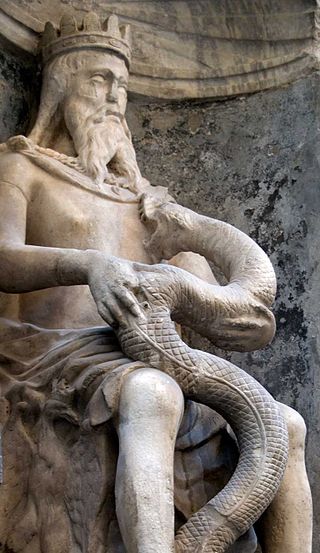
The Genius of Palermo is one of the city symbols and the lay patron of Palermo. He was the ancient numen and genius loci of the Sicilian city.

The Palazzo Riso, or RISO, Museo d’Arte Contemporanea della Sicilia, is a regional contemporary art museum located in the ancient Corso Vittorio Emanuele, Palermo, Italy.
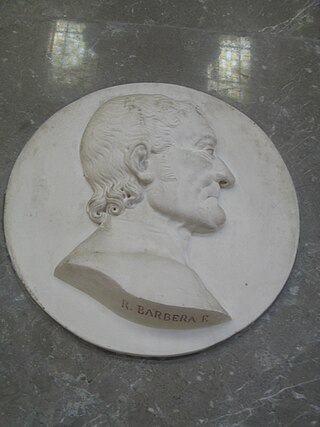
Giuseppe Velasquez, Velasques or Velasco was an Italian painter, active in a Neoclassic style.
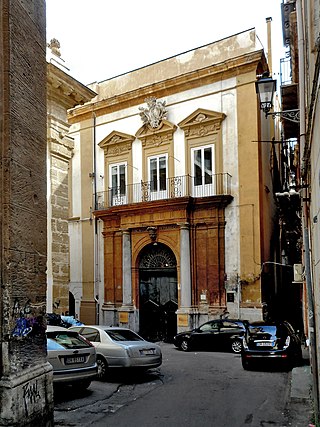
Palazzo Natoli is a Baroque palace in Palermo, in the Mediterranean island of Sicily. It was built by Vincenzo Natoli in 1765. It has a fine entrance on via S. Salvatore, and frescoes by Gioacchino Martorana.

Victory Square is a square of Palermo. It is located between the Royal Palace and the Palermo Cathedral, down the Cassaro street, in the quarter of the Albergaria, within the historic centre of Palermo. The square is dominated by the great garden of Villa Bonanno.

The Palazzo Alliata di Villafranca is former aristocratic mansion, now converted into a museum, located just off Via Vittorio Emanuele facing the Piazza Bologni which opens two blocks west of the Quattro Canti intersection, in the ancient quarter of the Albergaria of the city of Palermo, region of Sicily, Italy.
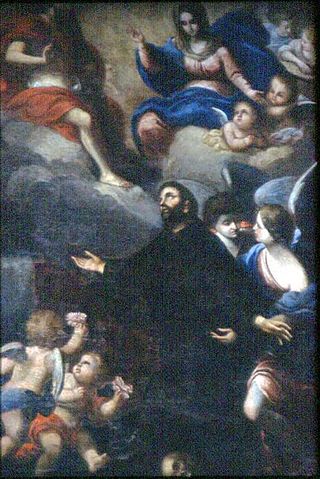
Andrea Carrera or Carreca was an Italian Baroque painter mainly active in Sicily. He was born in Trapani and died in Palermo.

Villa Zito is an 18th-century palace located on Via della Liberta #52 in Palermo, region of Sicily, Italy. The structure is now owned by the Fondazione Sicilia and serves as their museum gallery and exhibition space for their collection of artworks, mainly graphic works and paintings, by mainly Sicilian artists from the 17th to the early 20th century.
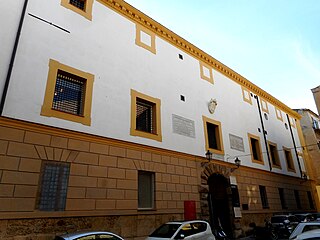
The Palazzo Branciforte is Renaissance-style aristocratic palace located on Via Bara dell'Olivella, in the historic center of Palermo, region of Sicily, Italy. It underwent extensive refurbishment under the direction of the architect Gae Aulenti, and since completion of the work in 2012 has been the home of the Fondazione Sicilia, and houses a modern library, auditorium, and exhibition halls.

The Palazzo Butera is a Baroque-style aristocratic palace located facing the Mediterranean in the ancient quarter of Kalsa of central Palermo, region of Sicily, Italy. On the shoreside, the long facade has a wide terrace, built atop the base of the former walls and called Passeggiata delle Cattive, in front of this is the park Foro Italico, in front, rising just south of Porta Felice and Via Vittorio Emanuele ; the access to the palace is from the land-side street of Via Butera.



















